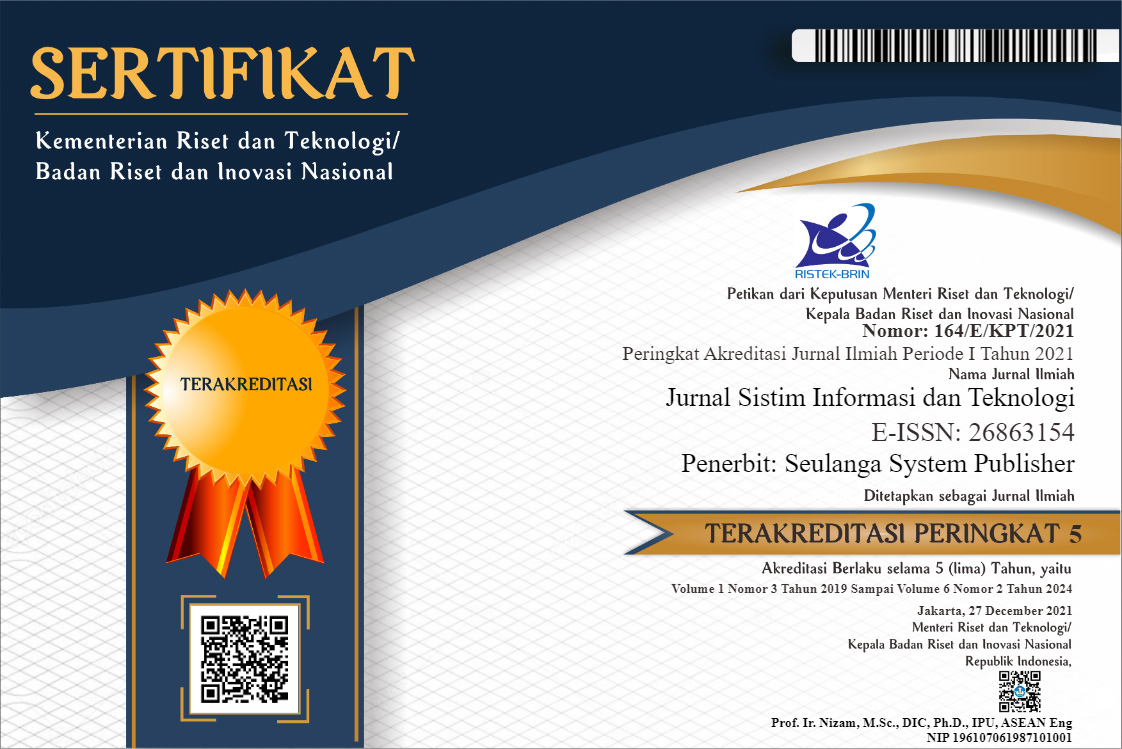Perceptions and Challenges of Women in Islamic Banking Leadership in Asia
DOI:
https://doi.org/10.60083/jsisfotek.v6i1.375Keywords:
Women In Leadership, Islamic Banking, Gender StereotypesAbstract
This study explores the perceptions and challenges faced by women in leadership roles within Islamic banks across Asia. Using a qualitative approach, in-depth interviews were conducted with female leaders in various Asian countries to examine their experiences and views on leadership in the Islamic financial industry. The findings reveal that, despite increasing female participation in leadership, significant barriers persist, including gender stereotypes, difficulties in balancing work and family life, and a lack of institutional support. These findings underscore the need for more inclusive strategies to empower women in leadership positions within the Islamic finance sector
References
B. Saiti, A. A. Ardo, and I. G. Yumusak, “Why non-Muslims subscribe to Islamic banking?,” Qual. Res. Financ. Mark., vol. 14, no. 2, 2022, doi: 10.1108/QRFM-01-2018-0005.
V. Mooneeram-Chadee, “The regulation of Islamic banking in Mauritius,” ISRA Int. J. Islam. Financ., vol. 12, no. 2, 2020, doi: 10.1108/IJIF-09-2019-0139.
O. K. T. Tran, H. D. Le, and A. H. V. Nguyen, “Role of institutional quality in economic development: A case study of Asian countries,” Probl. Perspect. Manag., vol. 19, no. 2, 2021, doi: 10.21511/ppm.19(2).2021.29.
Y. Abdullah, N. A. Ahmad-Zaluki, and N. A. Rahim, “Determinants of CSRD in non-Asian and Asian countries: a literature review,” J. Glob. Responsib., vol. 12, no. 1, 2021, doi: 10.1108/JGR-08-2020-0076.
L. Dagher and F. J. Hasanov, “Oil market shocks and financial instability in Asian countries,” Int. Rev. Econ. Financ., vol. 84, 2023, doi: 10.1016/j.iref.2022.11.008.
J. Sehen Issa, M. R. Abbaszadeh, and M. Salehi, “The Impact of Islamic Banking Corporate Governance on Green Banking,” Adm. Sci., vol. 12, no. 4, 2022, doi: 10.3390/admsci12040190.
E. Elgadi and W. Ghardallou, “Gender diversity, board of director’s size and Islamic banks performance,” Int. J. Islam. Middle East. Financ. Manag., vol. 15, no. 3, 2022, doi: 10.1108/IMEFM-09-2019-0397.
R. Grassa, “Corporate governance and credit rating in Islamic banks: Does Shariah governance matters?,” J. Manag. Gov., vol. 20, no. 4, 2016, doi: 10.1007/s10997-015-9322-4.
H. N. Jabari and R. Muhamad, “Gender diversity and financial performance of Islamic banks,” J. Financ. Report. Account., vol. 19, no. 3, 2020, doi: 10.1108/JFRA-03-2020-0061.
R. Alharbi, M. Elnahass, and J. McLaren, “Women directors and market valuation: What are the ‘Wonder Woman’ attributes in banking?,” J. Int. Financ. Mark. Institutions Money, vol. 80, 2022, doi: 10.1016/j.intfin.2022.101611.
F. Rahmawati, Teknologi Proses Pengolahan Tahu Dan Pemanfaatan Limbahnya, vol. 5, no. 1. 2013. [Online]. Available: https://revistas.ufrj.br/index.php/rce/article/download/1659/1508%0Ahttp://hipatiapress.com/hpjournals/index.php/qre/article/view/1348%5Cnhttp://www.tandfonline.com/doi/abs/10.1080/09500799708666915%5Cnhttps://mckinseyonsociety.com/downloads/reports/Educa
Tarwaka, Ergonomi Industri, Dasar-dasar Pengetahuan dan Aplikasi di Tempat Kerja. 2011.
G. Hudiwinarsih, “AUDITORS’ EXPERIENCE, COMPETENCY, AND THEIR INDEPENDENCY AS THE INFLUENCIAL FACTORS IN PROFESSIONALISM,” J. Econ. Business, Account. | Ventur., vol. 13, no. 3, 2011, doi: 10.14414/jebav.v13i3.18.
U. Riaz, B. Burton, and A. Fearfull, “Emotional propensities and the contemporary Islamic banking industry,” Crit. Perspect. Account., vol. 94, 2023, doi: 10.1016/j.cpa.2022.102449.
S. Supriyanto, “Compensation effects on job satisfaction and performance,” Hum. Syst. Manag., vol. 37, no. 3, 2018, doi: 10.3233/HSM-181635.
H. H. Hsieh and J. T. Huang, “Core Self-Evaluations and Job and Life Satisfaction: The Mediating and Moderated Mediating Role of Job Insecurity,” J. Psychol. Interdiscip. Appl., vol. 151, no. 3, 2017, doi: 10.1080/00223980.2016.1270888.
B. Rathore, A. K. Pundir, and R. Iqbal, “Ergonomic risk factors in glass artware industries and prevalence of musculoskeletal disorder,” Int. J. Ind. Ergon., 2020, doi: 10.1016/j.ergon.2020.103043.
S. Akter, M. A. Hossain, and M. M. Rahman Redoy Akanda, “A Noble Security Analysis of Various Distributed Systems,” Int. J. Eng. Sci. Inf. Technol., vol. 1, no. 2, 2021, doi: 10.52088/ijesty.v1i2.101.
Z. Azmi, “Artificial Neural Network Model For Wind Mill,” Int. J. Eng. Sci. Inf. Technol., vol. 1, no. 3, 2021, doi: 10.52088/ijesty.v1i3.84.
H. N. Jabari and R. Muhamad, “Diversity and risk taking in Islamic banks: Does public listing matter?,” Borsa Istanbul Rev., vol. 22, no. 3, 2022, doi: 10.1016/j.bir.2021.07.003.
Downloads
Published
How to Cite
Issue
Section
License
Copyright (c) 2024 Jurnal Sistim Informasi dan Teknologi

This work is licensed under a Creative Commons Attribution 4.0 International License.









